ca. 1000 BCE
The Nimrud Lens, a piece of Assyrian rock crystal and the earliest known lens—which was excavated by British anthropologist John Layard (1891-1974) in 1950— may have been used as a magnifying glass or to focus the sun’s rays to ignite fires.
ca. 400 BCE
First mention of pinhole camera concept and camera obscura image occurs, attributed to Chinese philosopher Mozi (470?–?391 BCE).
350 BCE
Aristotle (384–322 BCE), Greek philosopher and scientist, observes a partial solar eclipse using pinhole camera technique.
1021 CE
Alhazen (965?–?1040), an Arab physicist, publishes the seven-volume Book of Optics, in which the pinhole camera and camera obscura are described.
ca. 1266
Roger Bacon (1214?–1292), an English friar based in Paris, describes the optics of corrective lenses (worn by monks and scholars) in his Opus Majus.
1550s
Girolamo Cardano (1501–1576), an Italian scientist and philosopher, inserts a biconvex lens in his pinhole camera and advances the quality and brightness of camera obscura images.
1604
Johannes Kepler (1571–1630), German scholar and astronomer, is first to use the term “camera obscura” in print in his published work on astronomy, Ad Vitellionem Paralipomena.
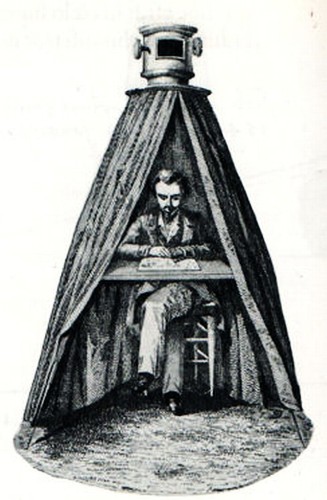
1608
The earliest known patent filing for a refracting telescope is credited to German-Dutch spectacle maker Hans Lippershey (1570–1619).
1609
Galileo Galilei (1564–1642), Italian astronomer, builds a small telescope with a lens approximately one-and-a-half inches in diameter.
1625
The word “microscope” is first used by German botanist and physician Giovanni Faber (1575–1629)
1660s
Newton discovers the composition of light, which leads the way for spectroscopy.
1668
Sir Isaac Newton (1642–1727), English physicist, builds the first practical reflecting telescope.
1670
Johannes Hevelius (1611–1687), Polish astronomer, builds a 150-foot-long refracting telescope, made of lenses hung by ropes from a pole.
1704
Newton Discovers the Composition of Light
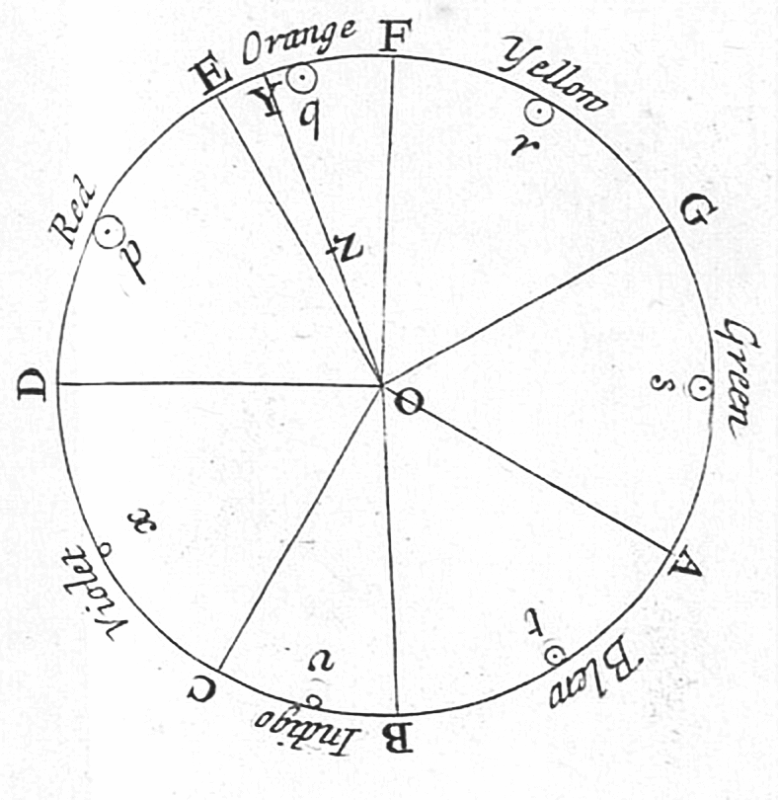
1789
Sir William Herschel (1738–1822), German-born English astronomer, completes a forty-foot-long telescope.
ca. 1800
Thomas Wedgwood (1771–1805), an early British photographic experimenter, attempts to produce permanent camera-recorded images on surfaces coated with light-sensitive chemicals. He captures only shadows and silhouettes, which he is unable to preserve permanently.
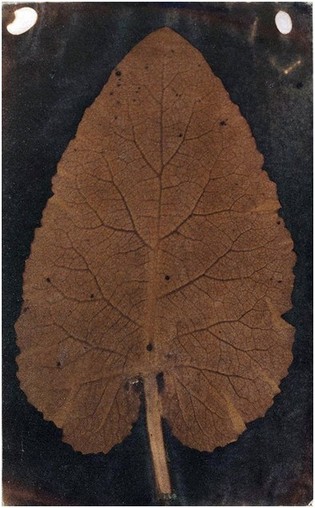
1824
Nicéphore Niépce (1765–1833), French inventor, captures the first durable, light-fast photograph on the surface of a lithographic stone, but it is destroyed during subsequent experiments.
ca. 1826–27
Niépce succeeds in making the earliest-known surviving photograph from nature, View from the Window at le Gras, which required an exposure of at least eight hours.
1834
The term “scientist” is first used by William Whewell (1794–1866), an English scholar.
1838
Working in France and awaiting a patent for the telegraph, American inventor Samuel Morse (1791–1872) meets French artist Louis Daguerre (1787–1851), who shows him light-sensitive images on metal plates, which Morse calls “one of the beauties of the age.”
1839
British inventor William Henry Fox Talbot (1800–1877) counters Daguerre’s claim of inventing photography by exhibiting images of photomicrographic specimens made with his solar microscope at the Royal Society in London.
Sir John Herschel (1792–1871) discovers that the action of hyposulphite of soda fixes photographic images permanently, experiments, makes photographs on glass, and is said to introduce the word photography to the public.
1840
John William Draper (1811–1882), English-American scientist, makes the first successful photograph of a full celestial body, a daguerreotype of the moon, during a twenty-minute-long exposure.
Alfred François Donné (1801–1878), a French pioneer in microscopy, photographs sections of bones and teeth.
Andreas Ritter von Ettingshausen (1796–1878), a Viennese physicist, produces some of the earliest daguerreotype photomicrographs.

1841
William Henry Fox Talbot introduces his patented calotype (or “talbotype”) paper negative process.
1844
Fox Talbot publishes the first installment of The Pencil of Nature the first photographically published book offered for sale to the public.

1845
William Parsons (1800–1867), Anglo-Irish astronomer, builds the “Leviathan of Parsonstown,” a reflecting telescope with a six-foot-diameter primary lens that leads to the discovery of the first spiral “nebulae.”
1846
Charles Brooke (1804–1879), British surgeon, invents self-recording instruments (including barometers, thermometers, and magnetometers) that use photographic paper to record variations in measurement.
1847
A streak of lightning is recorded on a daguerreotype by T. M. Easterly in St. Louis, Missouri.
1848
German-born brothers and Philadelphia entrepreneurs Frederick and William Langenheim perfected photographic lantern slides that allow for the projection of large images, transforming science and art history education.
1849
Sir David Brewster (1781–1868), Scottish physicist, inventor of the kaleidoscope, and popularizer of science, introduces an improved stereoscope, which leads to the first three-dimensional photography craze.
American inventor John Adams Whipple (1822–1891) makes high-quality daguerreotypes of lunar images at Harvard.
1850
First photograph of a star, Vega, is made by American astronomers William Cranch Bond (1789–1859) and his son George Phillips Bond (1825–1865).
ca. 1850
British psychiatrist and medical doctor Hugh Welch Diamond (1809–1886), a founder of the Royal Photographic Society, photographs the expressions of people suffering from mental disorders.
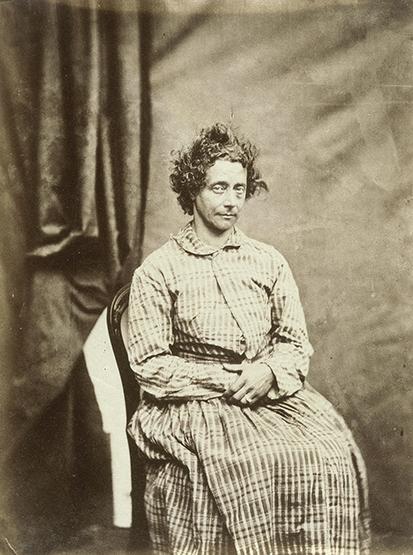
1851
The Great Exhibition of the Works of Industry of All Nations, the first World’s Fair, is held in London’s Crystal Palace, celebrating technology and featuring displays of photographic images and equipment.
William Cranch Bond takes what may be the first photograph of a planet, Jupiter.
Dr. August Ludwig Busch (1804–1855) commissions Prussian daguerreotypist Johann Julius Friedrich Berkowski to make an image of a solar eclipse at Königsberg observatory.
British artist Frederick Scott Archer (1813–1857) revolutionizes photography by using collodion, a medical dressing, to make glass plates photosensitive.
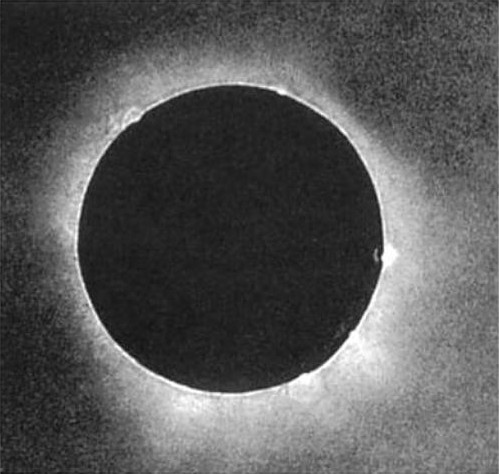
1853
First collodion photomicrographs, prepared by J. Delves and S. Highley, are published in a British scientific journal.
First issue of the Journal of the Photographic Society, with a strong interest in scientific photographic discoveries and uses, is published in England.
American daguerreotypist Platt D. Babbitt (1823–1879) sets up a pavilion on the American side of Niagara Falls to take and sell images of the natural wonder to tourists.

1855
The Exposition Universelle in Paris celebrates scientific and technological progress with large display of photographs on subjects such as astronomy, plant and animal species, people of the world, mental and physical illness, and natural disasters.
1856
The first underwater photograph is taken by Englishman William Thompson (1822-1879), who uses a camera attached to a pole.
1858
The first aerial photograph is taken by French photographer and balloonist Gaspard–Félix Tournachon (1820–1910), better known as “Nadar.”
British astronomer and meteorologist John Waterhouse (1806–1879) develops the earliest variable aperture stops for lenses and cameras.
Scottish physicist James Clerk Maxwell (1831–1879), interested in color theory, works with photographer Thomas Sutton to produce the first three-additive color photographic image.
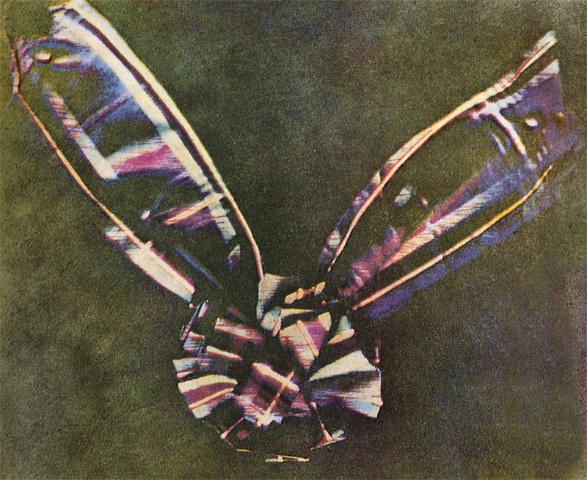
1861
First reported photograph of a “genuine” ghost is produced by Boston engraver William H. Mumler (1832–1884).
In England, William Henry Olley publishes The Wonders of the Microscope, Photographically Revealed by Olley’s Patent Micro-Photographic Reflecting Process.
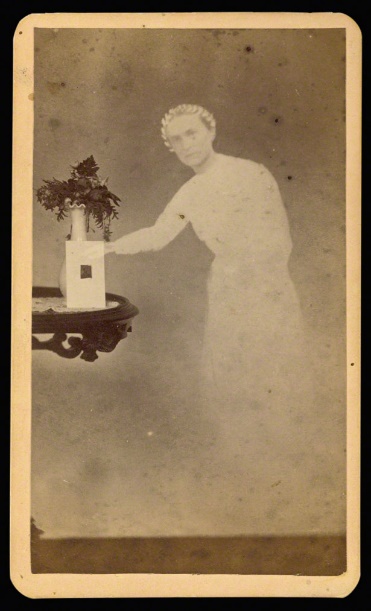
1862
French neurologist Duchenne de Boulogne (1806–1875) publishes photographs of induced expressions triggered by electric shock in Mécanisme de la physionomie humaine (The Mechanism of Human Facial Expression).
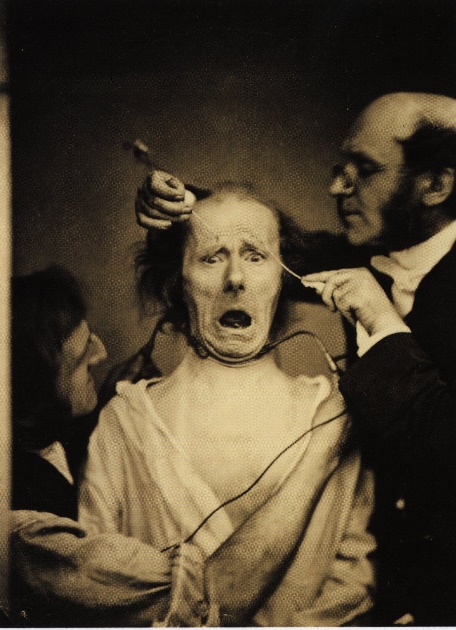
1865
Photographs of wounded Civil War soldiers, made by New York surgeon Reed B. Bontecou, are used to verify their injuries, document treatment, and determine postwar pension payments.
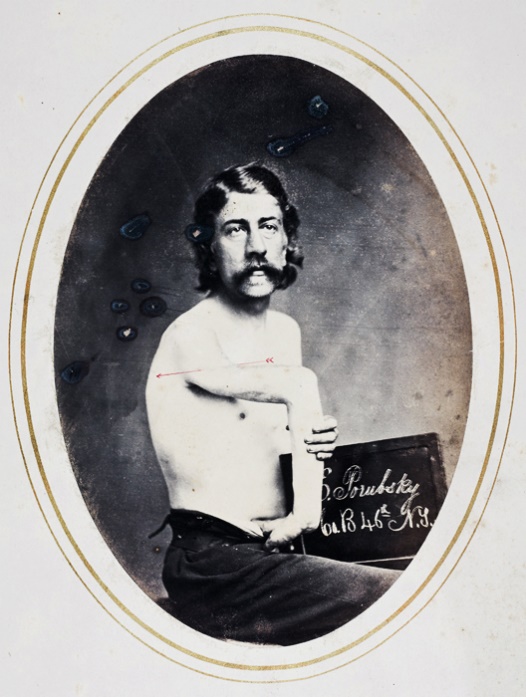
1870
American astronomer Charles A. Young (1834–1908) is first to photograph a solar prominence.

1872
British naturalist Charles Darwin (1809–1882) publishes The Expression of the Emotions in Man and Animals, one of the first scientific texts to include photographic illustrations.
American physician Henry Draper (1837–1882), son of John William Draper, makes the first photograph of the star Vega’s spectrum, clearly showing spectral lines.
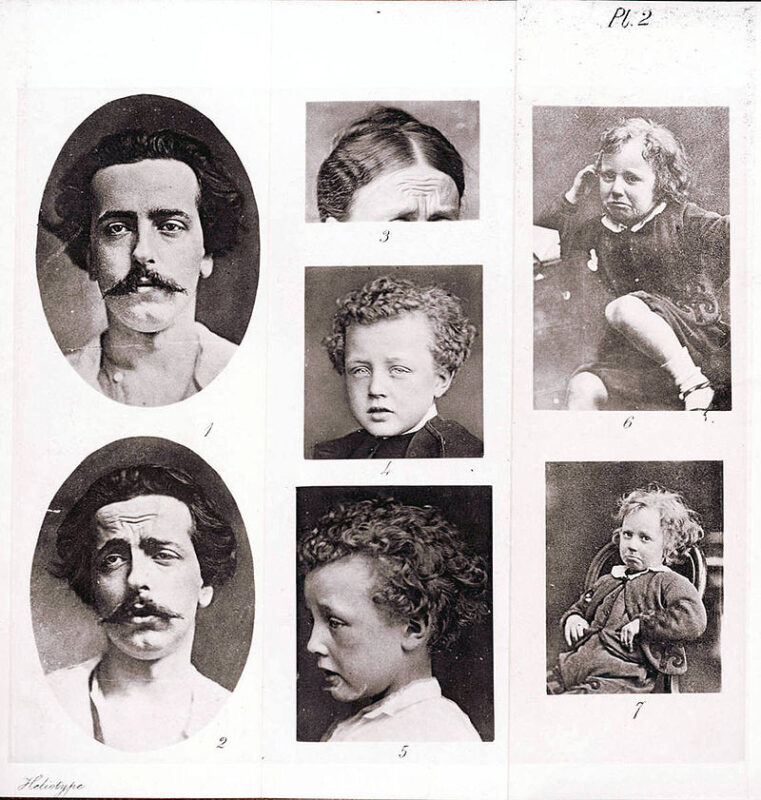
1873
The Moon, featuring dramatic photographs by Lewis Rutherfurd (1816–1892), is published.

1874
James Nasmyth (1808–1890) and James Carpenter (1840–1899), British astronomers, publish The Moon: Considered as a Planet, a World, and a Satellite, featuring photos of plaster models of the lunar surface believed to be more realistic than was obtainable with telescopic photography of the period.
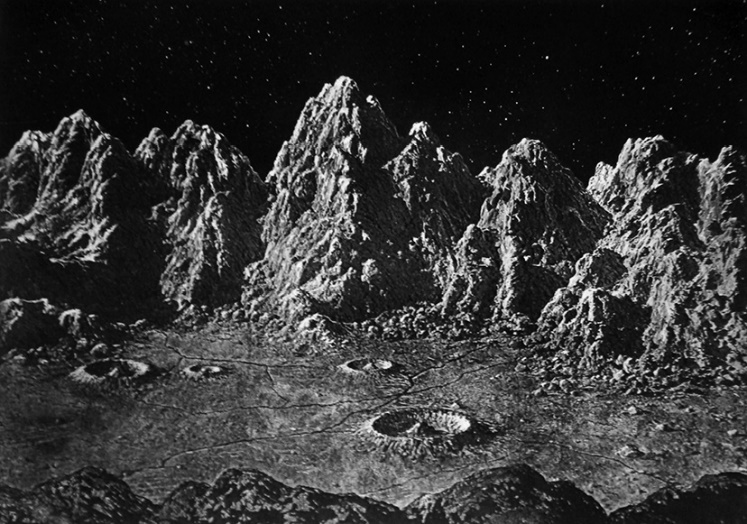
1876
Swiss chemist Ferdinand Hurter (1844–1898) and British chemical engineer V. C. Driffield (1848–1915) begin systematic evaluations of the characteristics of various photographic emulsions.
1877
German physician and pioneering microbiologist Robert Koch (1843–1910) is first to publish photographs of bacteria.
1878
In Palo Alto, California, English-born photographer Eadweard Muybridge (1830–1904) uses high-speed stop-motion photography to capture the gait of a horse in motion.
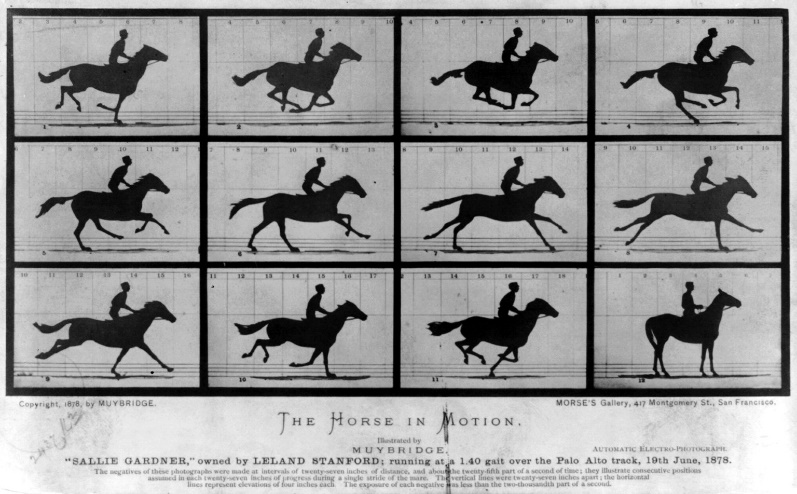
1880
Using the new dry-plate photographic process, Henry Draper makes a fifty-one-minute exposure of the Orion Nebula.
1881
American inventor Frederic Ives (1856–1937) patents a halftone printing process that enables photographs to be more easily printed with texts in books, newspapers, and magazines.
1882
French scientist Étienne-Jules Marey (1830–1904) makes the first chronophotographs, which combine multiple movements into a single image.
William Nicholson Jennings (1860–1946), an American commercial photographer, begins to systematically capture the various forms of lightning strikes.
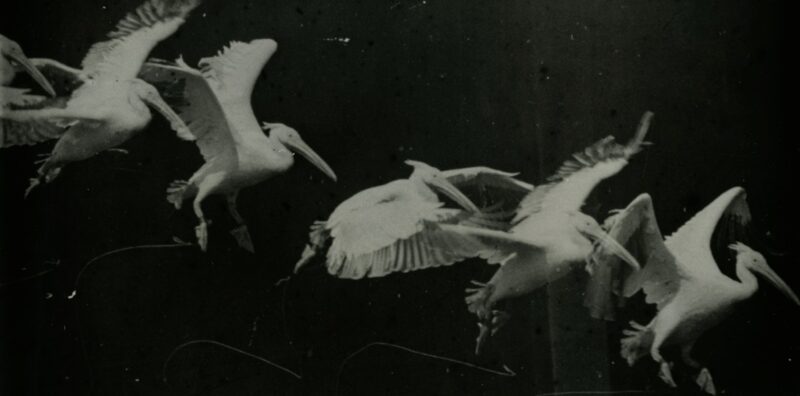
1885
First photographs of human retina are made by W.T. Jackman and J.D. Webster in London.
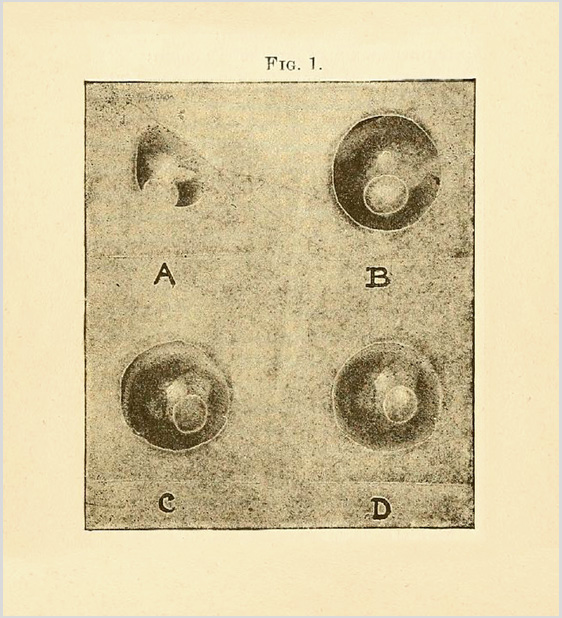
1886
The first photograph of a supersonic flying bullet is taken by Austrian physicist Peter Salcher (1848–1928).
The earliest known photographs of shock waves are made by Austrian physicist Ernst Mach (1838–1916) and his son, Ludwig.
First photographs of the human retina are made by W. T. Jackman and J. D. Webster in London.
1887
Eadweard Muybridge publishes the massive 781-image photographic collection Animal Locomotion: An Electro-Photographic Investigation of Consecutive Phases of Animal Movements.
Scientists meet in Paris and initiate the Carte du Ciel, an international photographic observation project whose goal is to map the heavens.
1888
George Eastman (1854–1932) perfects and patents the first Kodak box camera.
Late 1870s–1880s
Jean-Martin Charcot (1825–1893), a French neurologist, incorporates photographic imaging in his work on hysteria at Salpêtrière Hospital in Paris.
British sociologist, statistician, and eugenicist Francis Galton (1822–1911) creates composite portraits as tools to visualize, characterize, and identify distinct human “types”: the criminal, the mentally ill, and the socially inferior.
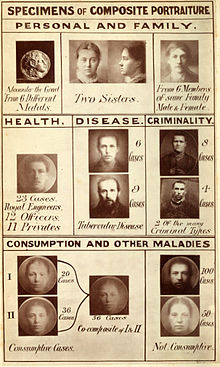
1890
German manufacturer Zeiss introduces Paul Rudolph (1858–1935)’s Protar lens, the first to successfully correct for all visual aberrations.
1890s
Nature, a weekly science journal first published in 1869, introduces photographic images in its pages.
1891
Participating observatories around the world begin making photographic plates for Carte du Ciel, the first complete photographic survey of the sky.
First photo of an asteroid is made by German astronomer Maximilian Franz Joseph Cornelius (“Max”) Wolf (1863–1932).
1893
Biologist Louis Boutan, advances the field of underwater phtoography in the course of his work in the University of Paris marine laboratory.
1895
German physicist Wilhelm Conrad Röntgen (1845–1923) makes a startling X-ray image of his wife’s hand and revolutionizes medical photography.
1896
American neurologist M. Allen Starr (1854–1932)’s Atlas of Nerve Cells features the first published microphotographs of neurons.
1899
First Underwater Photographer
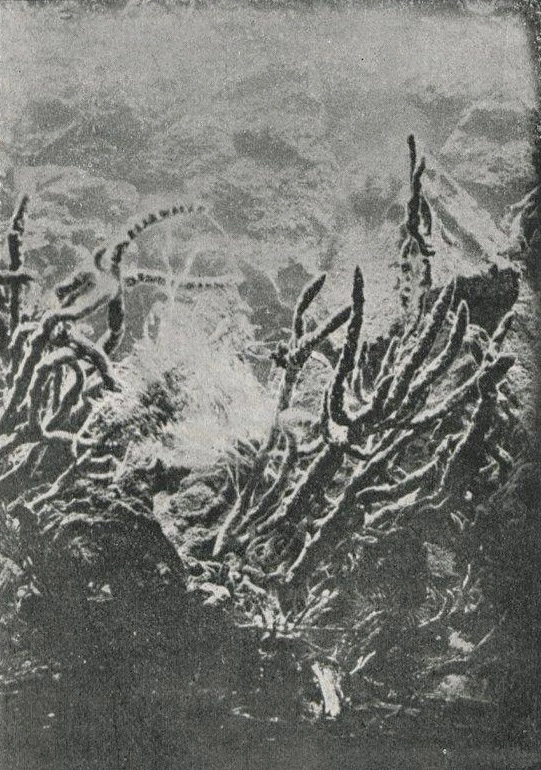
1900
The Kodak Brownie camera is introduced and sells for $1, making photography more accessible and affordable to the public.
1902
German physicist Arthur Korn (1870–1945) devises telephotography, which allows photographic images to be transmitted as electrical signals by wire to distant locations.
1905
American businessman and astronomer Percival Lowell (1855–1916) makes photographs of Mars, and claims they show life-supporting canals on the planet’s surface.
1908
Arthur Worthington (1852–1916), an English physicist and educator known for his research, drawings, and then photographs about fluid mechanics, publishes A Study of Splashes.
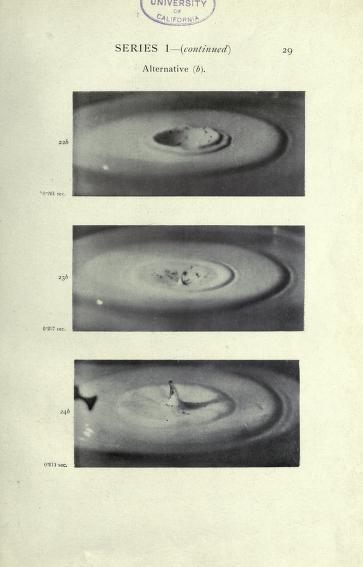
1909
French microbiologist Jean Comandon (1877–1970) attaches a movie camera to a microscope and records time-lapse images of syphilis bacteria.
1910
First filmed version of Frankenstein, based on the 1818 novel by Mary Shelley (1797–1851), tells the story of a young scientist who, in trying to create a perfect human being in the laboratory, makes a monster.
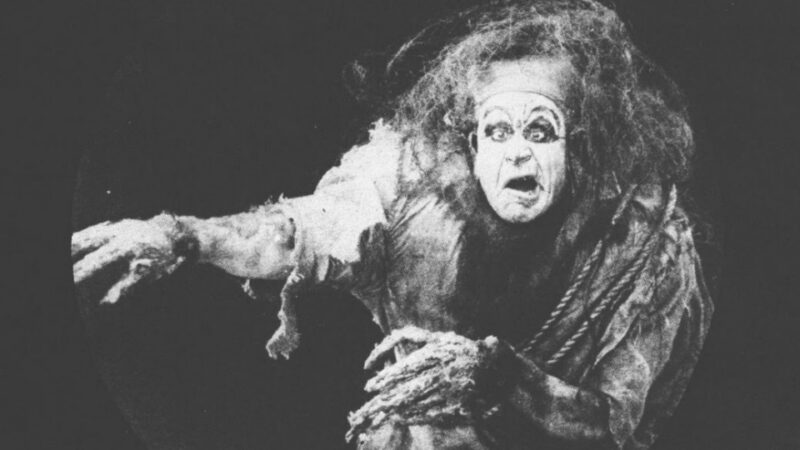
1913
Berlin pathologist Albert Salomon (1883–1976) uses an X-ray machine to study mastectomy specimens and observes black spots at center of breast carcinomas.
1917
During World War I, American art photographer Edward Steichen (1879–1973) becomes chief of the Photographic Section of the American Expeditionary Forces, and develops new aerial photographic surveillance techniques.
The one-hundred-inch Hooker telescope at the Mount Wilson Observatory in California receives “first light.”

1919
Photographs of a solar eclipse by British astronomer, physicist, and mathematician Arthur Eddington (1882–1944), confirm Albert Einstein’s theory of relativity, are published worldwide, and turn Einstein into an “overnight” celebrity.
1920
Harry G. Bartholomew and Maynard D. McFarlane of Britain invent the Bartlane cable picture transmission system and, in 1921, send photographic images across the Atlantic in less than three hours.
1921
The American news agency Science Service is established to help circulate scientific news to the general public via articles, photographs, films, radio broadcasts, records, and demonstration kits.
1923
American electrical engineer Harold Edgerton (1903–1990) invents the xenon flashlamp for strobe photography.
1925
Hungarian-born artist László Moholy-Nagy (1895–1946) publishes manifesto Painting, Photography, Film and encourages artists to look to science photography for inspiration.
1927
Portuguese neurologist António Egas Moniz (1874–1955) uses contrasting agents to make brain imaging in live patients possible.
At the Fifth Solvay International Conference in Brussels, notable international physicists discuss the newly formulated quantum theory and pose for photos. Among those pictured are Marie Curie, Niels Bohr, Werner Heisenberg, Max Planck, Wolfgang Ernst Pauli, and Albert Einstein.
1928
German photographer Albert Renger-Patzsch (1897–1966) publishes Die Welt ist schön (The World Is Beautiful), in which photograph of natural forms and industrial and mass-produced objects are presented together and with scientific clarity. in which equally elegant photographs of both natural forms and mass-produced objects are juxtaposed.
1929
Hungarian physicist Kálmán Tihanyi (1897–1947) invents the infrared-sensitive, night-vision, electronic television camera for anti-aircraft defense in Britain.
1930
German optician Bernhard Voldemar Schmidt (1879–1935) devises a corrector plate that enables telescopic images of the sky to be made with wide fields of view and limited distortion.
1931
A new version of Frankenstein, directed by James Whale and featuring Boris Karloff as the monster, is released.
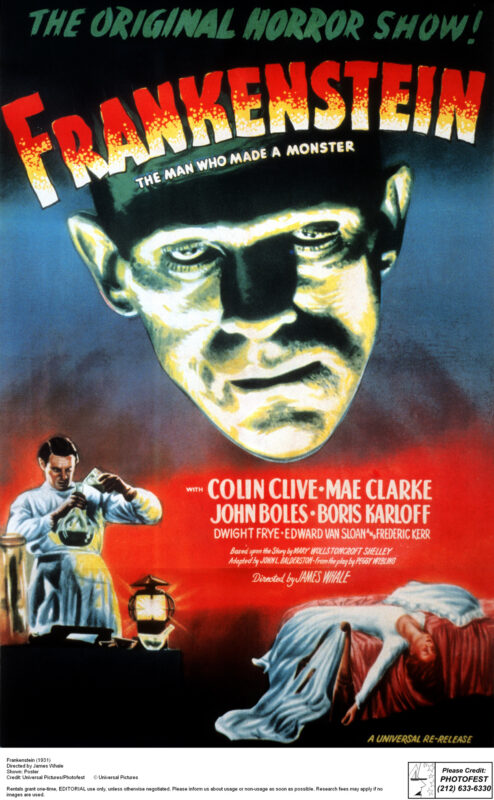
1932
Edwin H. Land (1909–1991), an American scientist, works with a physics instructor, George Wheelwright III, to commercialize polarizing filter technology.
Flexible gastroscope is introduced by German physician Rudolf Schindler (1888–1868).
Images made in a cloud chamber, set up by Caltech scientists Carl Anderson and Robert Millikan, present strong evidence for the existence of a new particle, the positron.
1933
German engineer Ernst Ruska (1906–1988), working with Max Knoll, builds a prototype for an electron microscope, the first instrument to provide better definition than a light microscope.
In Rouben Mamoulian’s feature film Dr. Jekyll and Mr. Hyde, based on Robert Louis Stevenson’s 1886 novel, a man of science ingests a potion he developed and turns into a maniac.
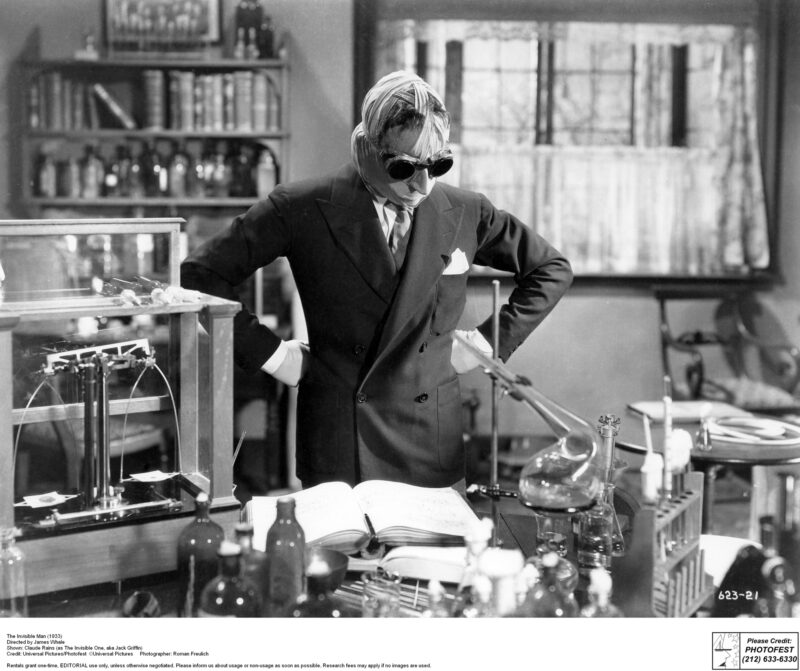
1934
The 200-inch, 29,000-pound telescope mirror for the Palomar Observatory is cast, but takes eleven years to be polished; the telescope becomes operational in 1949.
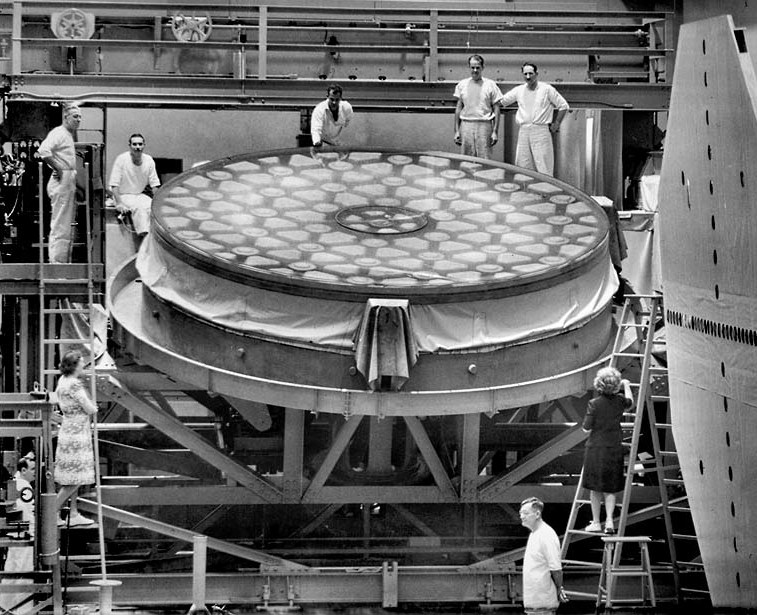
1935
American Surrealist artist Man Ray (1890–1976) photographs physical models of mathematical functions on display at the Institut Henri Poincaré in Paris. Twelve are published in 1936 in the journal Cahiers d’Art.
1936
Photographer and delphinium breeder Edward Steichen displays his flowers in a one-week exhibition at the Museum of Modern Art, New York.
1934–37
RRCA develops vacuum tubes, extremely sensitive to light in the ultraviolet, visible and near irfrared ranges that become useful inin nuclear and particle physics, astronomy, and medical imaging.
1937
One of Harold Edgerton’s milk drop coronet photographs is included in the Museum of Modern Art’s first photography, Photography 1829-1937.
1938
Xerography, images created by attracting carbon black to paper by electrostatic forces, is pioneered by American physicist and patent attorney Chester Floyd Carlson (1906–1968).
1940
Two feature films about Thomas Edison—Edison, the Man, starring Spencer Tracy, and Young Tom Edison, starring Mickey Rooney—are released.
1942
An early form of ultrasound is employed in medical procedures.
1943
First use of radar to detect storms.
1945
The first atomic bomb is detonated in the New Mexican desert (test code name: Trinity) and photographed by dozens of cameras placed at various distances from the blast site.
First electron micrograph of an intact cell is published in the Journal of Experimental Medicine in March 1945 in “A Study of Tissue Culture Cells by Electron Microscopy,” by Keith R. Porter, Albert Claude, and Ernest F. Fullam.
1946
First image of Earth seen from space is taken by a camera atop a German V-2 missile (which had been captured by Americans during World War II) and launched from White Sands, New Mexico.
1947
US military develops infrared line-scanner thermal imaging.
1948
British-Hungarian scientist Dennis Gabor (1900–1979) develops theory of holography.
1950s
American radiologists Russell Morgan and Edward Chamberlain and physicist John W. Coltman develop a method of screen intensification that reduces radiation exposure and leads to advances in medical and military imaging, including night vision. Their process reduces radiation exposure, thereby enhancing fluoroscopic vision.
British chemists Max Perutz (1914–2002) and Sir John Kendrew (1917–1997) use X-ray crystallography to determine the structure of the oxygen-carrying proteins myoglobin and hemoglobin. They win the Nobel Prize in chemistry in 1962.
Premiere of “Better Things for Better Living through Chemistry,” a DuPont advertising slogan, which is widely used through 1982.
1951
The New Landscape in Art and Science, an exhibition at MIT curated by Hungarian-born artist/theorist György Kepes (1906–2001), features macro- and photomicrography, cloud chamber images, and high-speed photographs.
Don Herbert (1917–2007) stars on the popular children’s TV show Watch Mr. Wizard (1951–65), where he demonstrates the science behind everyday objects and events.
1952
Harold Edgerton and business partners, working for the Atomic Energy Commission, develop the rapatronic (rapid action electronic) shutter so cameras can photograph atomic bombs as they explode.
English chemist and X-ray crystallographer Rosalind Franklin (1920–1958) and graduate student Raymond Gosling capture Photo 51, the X-ray diffraction pattern image that provides James Watson and Francis Crick with the key to understanding the double helix structure of DNA.
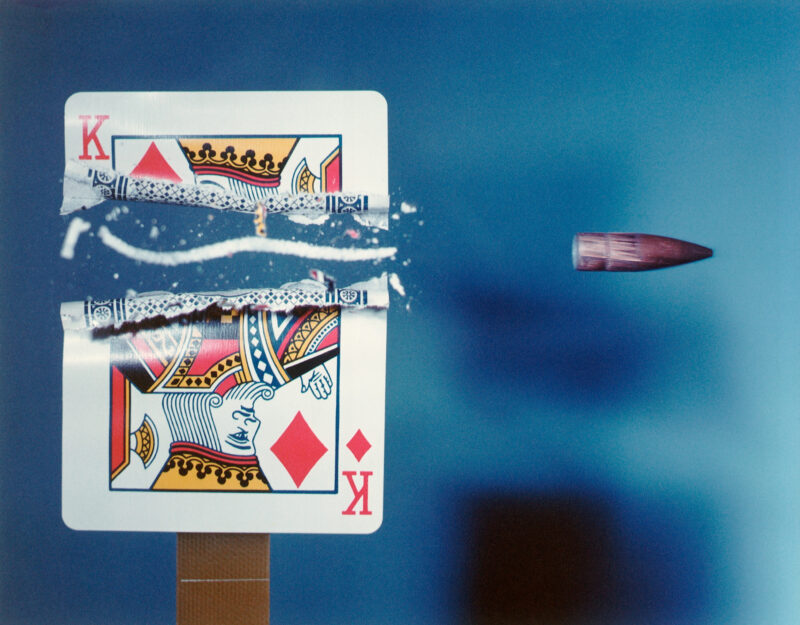
1952–54
Life magazine publishes a popular and widely read series of thirteen science articles, “The World We Live In,” featuring photographs by Fritz Goro, Alfred Eisenstaedt, and others.
1954
Sonographic images, referred to as “sonograms,” are reported on in Life magazine.
1955
Albert Einstein dies.
1956
In an article published in The New Statesman C. P. Snow (1905–1980) introduces his controversial concept of “The Two Cultures,” analyzing Western culture’s intellectual split between the sciences and the humanities.
French oceanographer Jacques Cousteau (1910–1997) codirects the documentary film The Silent World with Louis Malle.
1957
The Russians’ launch of their Sputnik 1 satellite into an orbit around the earth triggers the Cold War space race.
First computer-scanned photograph, captured by Russell Kirsch at the US National Bureau of Standards, is a portrait of his three-month-old son.

1958
American electrical engineer and biophysicist Hal Anger (1920–2005) invents a camera that uses gamma rays emitted by a radioactive isotope to detect tumors, and ushers in the age of nuclear medical imaging.
1959
Explorer 6, a small, earth-science satellite launched to study geomagnetism and other properties, also tests a device to scan and photograph the earth’s cloud cover, and transmits the first pictures of the earth from orbit.
The first photo of the far side of the moon is taken by the Soviet spacecraft Luna 3.
Scottish physician Ian Donald (1910–1987) and colleagues develop practical applications for ultrasound as a diagnostic tool in obstetrics and gynecology.
1960s
Lidar, similar to radar but using focused laser-light imaging, is first used by meteorologists to measure clouds.
Science images produced by American photographer Berenice Abbott (1898–1991), sponsored by the Physical Science Study Committee, are featured in a high school physics textbook.
1961
Images of Hurricane Esther are captured by Tiros III satellite, in orbit four hundred miles away from Earth.
In The Absent-Minded Professor—directed by Robert Stevenson and starring Fred MacMurray—a professor formulates an antigravity substance, which a corrupt businessman tries to steal.
Scripted TV shows about medical doctors, such as Ben Casey and Dr. Kildare (both 1961–66), become popular.
1962
American biologists Sy Rankowitz and James Robertson invent the first positron emission tomography (PET scan) transverse section instrument, which facilitates the diagnosis of types of cancer, heart disease, and other diseases.
NASA inaugurates an arts program and begins inviting artists, including Robert Rauschenberg and Norman Rockwell, to make work based on space flight.
1963
British primatologist and anthropologist Jane Goodall publishes an account of her work, “My Life Among Wild Chimpanzees,” in National Geographic magazine.
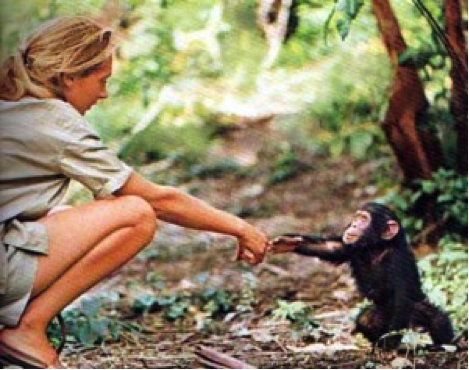
1964
Computers are used to enhance the quality of images of the moon taken by the Ranger 7.
1964–65
American computer scientists Woody Bledsoe, Helen Chan Wolf, Charles Bisson, and colleagues work with databases of photographic images and pioneer facial recognition systems.
1965
First close-up photo of Mars, transmitted from the Mariner 4 satellite, is published.
1966
In the feature film Fantastic Voyage, a submarine shrinks to microscopic size and travels through an injured scientist’s circulatory system and body to repair brain damage.
1967
Once Invisible, an exhibition of science photographs curated by John Szarkowski, opens at the Museum of Modern Art, New York.
Sir Godfrey Hounsfield (1919–2004), an English electrical engineer, conceives the idea for computed tomography (CT) scanning, which eventually leads to the building of a whole-body scanner.
1968
Astronauts on Apollo 7, the first piloted Apollo mission, conduct two scientific photographic sessions and transmit television pictures to the American public from inside the space capsule.
Apollo 8 astronaut William Anders takes a color photograph of Earth rising over the lunar surface that creates a sensation back home and, some believe, triggers the start of the environmental movement.
1969
Willard S. Boyle and George E. Smith invent the first successful digital sensor, a CCD (charge-coupled device), which transforms light into signals that can be captured electronically rather than on film.
1970
Albert V. Crewe, British-born American physicist (1927–2009), is the first to photograph single atoms with a scanning transmission electron microscope.
America zoologist and conservationist Dian Fossey’s (1932–1985) work with gorillas is featured in photographs in National Geographic magazine.
Mid-1970s
Conspiracists question whether the Apollo moon landings ever happened, claiming NASA faked photographs and shot the scenes on Hollywood sound stages.
1971
American chemist Paul C. Lauterbur (1929–2007)’s work helps conceptualize and define magnetic resonance imaging (MRI), which uses magnetic fields and pulses of radio-wave energy to picture organs and structures inside the human body, providing different data than other scanning types.
Apollo 15 astronauts use lidar technology to map the surface of the moon.
Godfrey Hounsfield and South African–born American physicist Allan Cormack (1924–1998) independently develop computerized axial tomography scanning, used to produce CAT scans, which combine multiple X-ray images to generate cross-sectional views and three-dimensional images of internal organs and structures.
Landsat, a joint project of NASA and the US Geological Survey, begins to create a continuous map and photographic archive of images of the globe made from space and used for monitoring agricultural productivity, water resources, urban growth, deforestation, and natural change.
The Blue Marble, a photograph of Earth taken away by the crew of the Apollo 17 on December 7th and from 28,000 miles away, becomes one of the most widely distributed images in human history.

1973
Astronauts on Skylab, the first US space station, capture detailed images of Earth using remote-sensing photographic systems mounted on the spacecraft, in addition to a handheld Hasselblad camera.
1974
NOVA, a popular and award-winning American TV series featuring interviews with scientists, based upon an earlier BBC2 series, Horizon, is distributed worldwide.
1975
Steven Sasson invents the first digital camera at Eastman Kodak. It weighed 8 pounds (3.6 kg), had 0.01 megapixels, and took twenty-three seconds to record an image to a cassette tape.
The flatbed scanner is invented by American computer scientist/futurist Ray Kurzweil.
Lander from Venera 9, an unmanned Soviet mission to Venus, sends the first images from the surface of another planet back to earth.
1977
First full MRI scan of a human being is produced.
Powers of Ten: A Film Dealing with the Relative Size of Things in the Universe and the Effect of Adding Another Zero, a film by Charles and Ray Eames, largely made from still photographs animated into a zoom shot, explores the nature of scale and the limits of the observable universe.
1978
Connections, a ten-episode BBC documentary featuring science historian James Burke, airs and takes an interdisciplinary approach to science.
1979
Voyager 1 spacecraft, nearing Jupiter, captures hundreds of images of its approach.
NASA begins operation of its Infrared Telescope Facility in Hawaii, with an approximately 120-inch reflector.
1980
On the TV miniseries Cosmos, American astronomer Carl Sagan explores and reports on various elements and theories of the universe.
1981
Gerd Binnig and Heinrich Rohrer, physicists working for IBM, design and build the first scanning tunneling microscope (STM), an instrument for imaging surfaces on the atomic level.
1984
Beyond Vision exhibition and book by Jon Darius for Britain’s National Museum of Photography, Film and Television features one hundred photographs tracking the history of science photography.
1986
Gerd Binnig, Cal Quate, and Christoph Gerber introduce the atomic force microscope (AFM), which is used in surface science, nanotechnology, polymer science, semiconductor materials processing, microbiology, and cellular biology.
The Tagged Image File Format (TIFF) is developed by Microsoft and Aldus to be compatible with multiple processing programs and devices.
1987
Real-time movie imaging of a single cardiac cycle is made using echo-planar imaging (EPI).
1990
Adobe Photoshop 1.0 is introduced.
The Hubble Space Telescope, a cooperative effort of the European Space Agency and NASA and named after astronomer Edwin Hubble (1889–1953), is sent into orbit, and is designed to be regularly serviced by shuttle crews over its expected fifteen-year life span.
1991
Introduction of functional MRI imaging (fMRI) allows for mapping regions of the brain responsible for thought and motor control, and facilitates early detection of acute stroke.
The Face Recognition Technology (FERET) Evaluation works with the Defense Advanced Research Projects Agency (DARPA) in an effort to encourage the development of facial recognition algorithms and technology.
Bill Nye the Science Guy, a live-action educational comedy television program, debuts on American TV.
1995
Portable Network Graphics file format (PNG) is created as a flexible file format that allows for date compression without loss, cross platform consistence, and variable transparency.
1997
French-born technology entrepreneur Philippe Kahn sends the first camera-phone photograph of his newborn daughter.
Beauty of Another Order: Photography in Science, an exhibition curated by Ann Thomas, opens at the National Gallery of Canada, Ottawa.
1999
The Chandra X-Ray Observatory is launched, created to discover X-ray emissions from areas in space that give off heat, such as clustered galaxies, exploded stars, and black-hole matter.
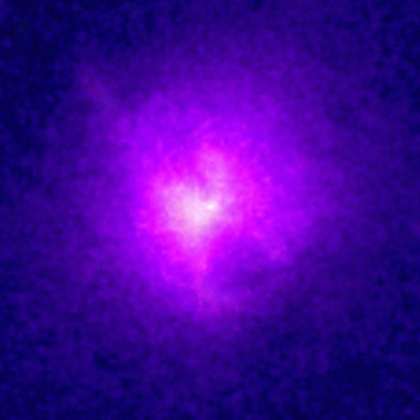
2000
CSI: Crime Scene Investigation (2000–2015), a TV show about a team of Las Vegas police forensic experts, premieres.
2001
First generation of PillCams are introduced.
2003
Launch of the Spitzer Space Telescope, the most sensitive infrared space observatory ever produced, which joins three other space observatories (Hubble, Compton, and Chandra), each observing the universe in a unique light.
2005
The photographic mapping program Google Earth is released for public use. Its development was financed by Keyhole, Inc., a Central Intelligence Agency (CIA)–funded company acquired by Google in 2004.
First light for the Southern African Large Telescope (SALT) in South Africa. It is thirty-six feet in diameter, making it the largest optical telescope located in the Southern Hemisphere.
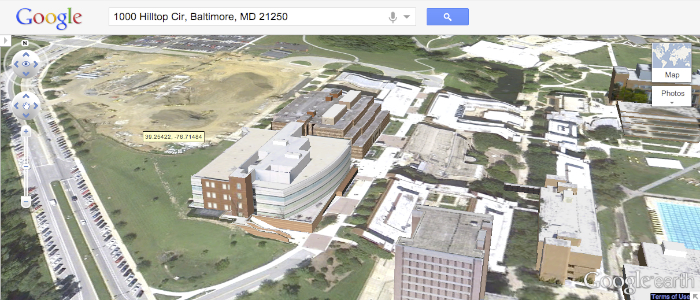
2006
On assignment for National Geographic, American George Steinmetz is the first photographer to use digital camera traps to photograph wildlife.
2007
The Big Bang Theory (2007–present) premieres on TV, featuring comedic stories about nerdy scientists, their lives, loves, and relationships, and occasional cameo appearances by well-known scientists..
2008
American biochemist Roger Tsien shares the Nobel Prize in Chemistry with Osamu Shimomura and Martin Chalfie for their work on green fluorescent protein (GFP), used in imaging living cells and tissues.
GigaPan Systems equipment becomes commercially available, using software devised for NASA’s Mars Spirit and Opportunity rovers to create hyperdetailed gigapixel panoramic images.
First binocular light of the Large Binocular Telescope in Arizona, which will have ten times the resolution of Hubble Space Telescope images.
Brought to Light: Photography and the Invisible, 1840–1900, an exhibition curated by Corey Keller, opens at the San Francisco Museum of Modern Art.
2011
New microscope developed by scientists at Howard Hughes Medical Institute enables the making of three-dimensional movies of living cells.
Lytro announces the first pocket-size light-field camera for consumers, capable of refocusing images after they have been taken.
MIT, using a technique called “femto-photography,” develops a camera that captures one trillion frames per second, including light as it moves through space.
Collide@CERN, a program that brings artists and scientists together in a free exchange of ideas, is inaugurated.
2012
Computer scientist Fei-Fei Li and colleagues launch the ImageNet Large Scale Visual Recognition Challenge dataset with the goal of collecting millions of images as a resource for computer vision researchers.
2013
NASA launches its Instagram account.
2014
European Space Agency’s Rosetta spacecraft, after traveling ten years and four billion miles, provides unprecedented close-up images of a comet.

2015
NASA’S New Horizons satellite, launched on January 19, 2006, conducts a six-month photo-reconnaissance study of Pluto and its moons, and sends unprecedented hi-res images back to earth.
Revelations: Experiments in Photography, an exhibition curated by Ben Burbridge and Greg Hobson, opens at the Science Museum, London.
2016
Scientists at the University of Stuttgart, Germany, create a tiny camera, the size of a grain of salt, that can be injected into the human body through a syringe.
University of Washington researchers explore how to convert data from digital image files into strings of DNA, so that images can be stored, retrieved, and read back at a later date.
The primary mirror of NASA’s James Webb Space Telescope consisting of 18 hexagonal mirrors looks like a giant puzzle piece standing in the massive clean room of NASA’s Goddard Space Flight Center in Greenbelt, Maryland. Appropriately, combined with the rest of the observatory, the mirrors will help piece together puzzles scientists have been trying to solve throughout the cosmos.
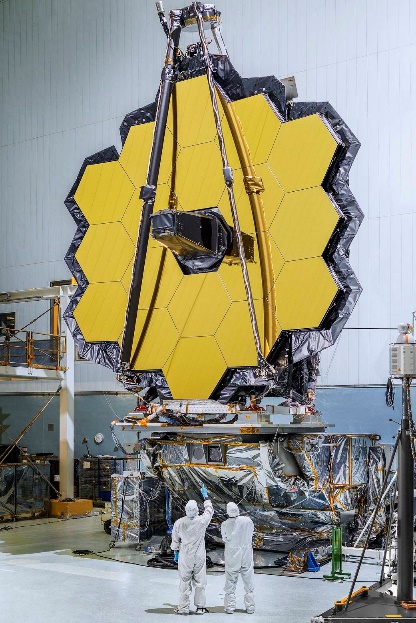
2017
Using a “streak camera” capable of capturing 100 billion frames a second, researchers at Washington University in St. Louis record the equivalent of a photonic “sonic boom” in real time.
Jacques Dubochet, Joachim Frank, and Richard Henderson are awarded the Nobel Prize in Chemistry for developing 3D, ultra-high-resolution, and molecular level images of proteins, DNA and RNA.
2018
The Event Horizon Telescope, a worldwide consortium of observatories, collects data and develops algorithms with the goal of producing the first image of a black hole.
Google AI is able to predict risk factors for heart disease by analyzing photos of the retina.
SoFi, a camera-equipped, flexible robotic fish, mingles with real ones to capture unprecedented pictures of underwater life.
Works continues on the complex James Webb Space Telescope (the next-generation successor to the Hubble Space Telescope), a joint project of NASA, the European Space Agency (ES), and the Canadian Space Agency (SCA), now scheduled for a 2021 launch.